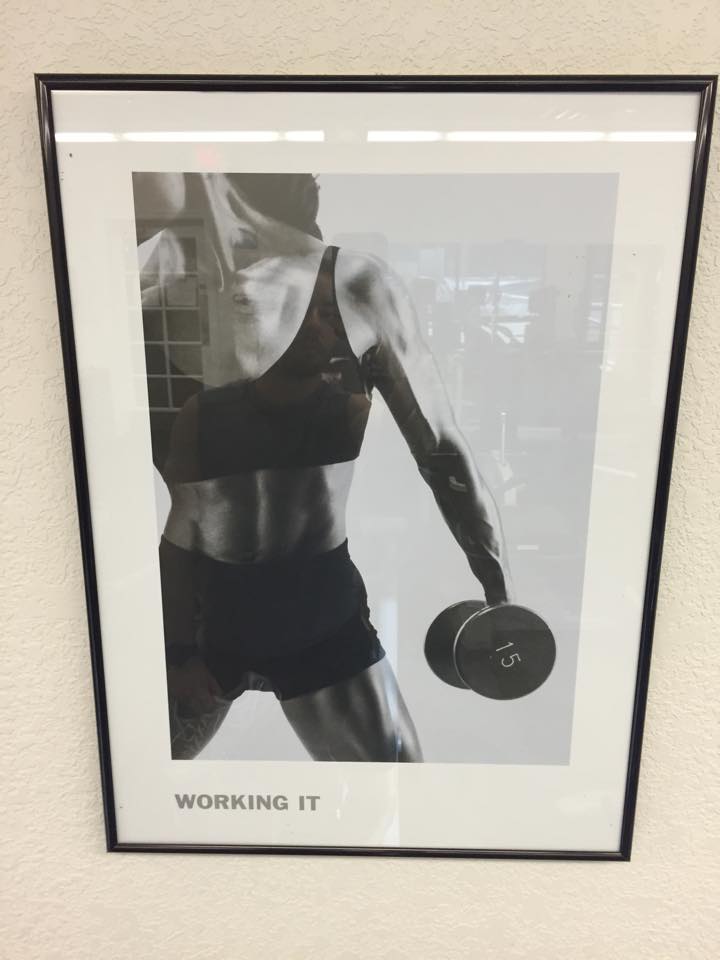 Last Monday was two days after the Rothman 8k, my first race in 5 months, and my legs were still sore. While I'm sure I could have gone for a run, I am coming back from injury and didn't want to take any chances.
Last Monday was two days after the Rothman 8k, my first race in 5 months, and my legs were still sore. While I'm sure I could have gone for a run, I am coming back from injury and didn't want to take any chances.
While typically I enjoy cycling as my preferred mode of cross training, a quick scan of my in-laws retirement village gym revealed a couple of recumbent bikes and these super motivating pictures:
I really wanted to minimize stress on my body yet get my heart rate up into the aerobic training zone. Enter the steep uphill treadmill walk.
These sessions are great for runners returning from impact related injury and, since you're walking, are fairly task specific. PS: If you've got the green light to run and you want to get in a hard session, but you're prone to impact injuries (stress fractures, knee and hip pain), running uphill is fantastic.
Setting the Treadmill
Obviously it depends on what you want to get out of the workout. Normally, I'm looking to achieve the same cardiovascular benefit to a regular training run.
I had my heart rate in the 140s (equivalent to an easy run for me) with the speed at 4.2mph and the incline at 11.5.
Your settings will most likely be different, but I'd recommend bringing the speed up first - likely between 3.5 and 4.5. Walk briskly yet confidently, let your torso rotate (most people do not do this, but should), and arms swing naturally. My client Jerry calls it the drunken sailor walk :-)
(The more injured you are, the slower and steeper you should go.)
Next, bring that incline up until you feel like you're working hard but at a sustainable effort. Check your form - still good? You're not holding on to those handlebars, now, are you?
You should feel like you're leaning into it and that the console is a few inches from your face, and that's ok!
Now, to really dial it in, check your heart rate. It's ok to hold the handlebars at this point if you don't have a HR monitor - just don't grip tightly and lean back. If it's at the desired level, great. If not, adjust the incline up or down.
Who Should NOT Do This?
Anyone with Achilles' tendon problems, plantar fasciosis, ankle or big toe flexibility issues might want to avoid this type of session unless they speak with a qualified professional first. Seriously, a LOT of people have ankle restrictions, so assess yourself first.
Finally, a quick personal anecdote....
One of the craziest races I've run was the 2005 Mt Washington Auto Road Race in New Hampshire. It's only 7.6 miles and there's only one hill. But it's a 7.5 mile hill and average incline of 11.5%! Take your half marathon time and that's about how long it will take you to run those 7+ miles.
Once a week I'd hop on the treadmill and crank it up to 11.5% and run progressively farther. I built up to 45 min because that's about all I could take. The sweat I generated was insane, the friggin console was in my face so I couldn't see anything, but I was IN SHAPE.
So give "steep uphilling" a shot if you want to try something different, but effective! You'll find it interesting that you won't even be sore after these sessions because there's very little impact with uphill running.
Have you tried this before? Got any tips you'd like to share?




